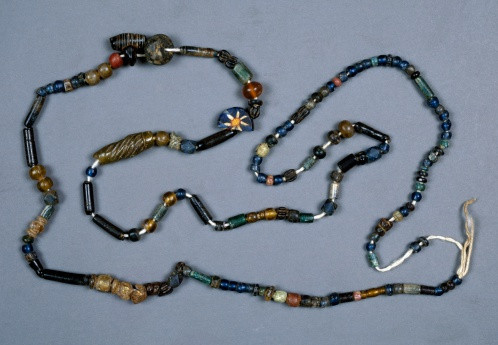Beautifully crafted glass artefacts appeared in Ancient Egypt earlier than in Mesopotamia
Glass beads and vessels found in Mesopotamia were made later than previously thought, based on Egyptian creations.

Glass-making may have emerged in Ancient Egypt and not in Mesopotamia, as it was previously thought, researchers have said. While many beautifully crafted glass artefacts dating from 3,600 years ago have been found at the site of Nuzi in Iraq, researchers now believe these may not be the earliest manifestations of glass-making.
Glass objects, including beads, vessels and jewellery appear frequently in the archaeological record from the 16<sup>th century BC, both in Egypt and in countries of the Near East.
The question of which region was more likely to have been the cradle of glass-making is still being debated, but the multiple finds at Nuzi have generally convinced archaeologists that Mesopotamia was where the practice originated.
In a new study presented at the annual meeting of the American Schools of Oriental Research, a team led by conservation scientist Katherine Eremin of Harvard Art Museums conducted new analysis of the glass artefacts discovered at Nuzi and other sites in ancient Mesopotamia. They also examined objects unearthed from contemporary Egyptian sites.
Dating and comparing glass objects
The scientists' work involved dating archaeological strata as well as investigating the techniques employed to make the glass. Dating work suggest that glass-making appeared later than previously thought in Mesopotamia.
The researchers determined that glass objects excavated at Nuzi are in fact a mix of ancient Mesopotamian items and glasswork from later occupations, some as recent as the 1800s. The most ancient glass objects there were found in sediment layers dated to around 3,400 years ago, 2,000 years later than reported initially.

More importantly, the techniques used at Nuzi were found to be distinct than the ones identified in Ancient Egypt, and much less sophisticated. Egyptian glass items display a wider range of colours, including red, green, yellow, opaque blue and translucent blue. They sometimes feature patterns of wavy, coloured lines. Nuzi artefacts in contrast suggest a more limited mastery of glass-making. When coloured lines appear on the beads, they are crudely arranged.
"The Nuzi glass-makers were consciously copying Egyptian trailed and marvered vessels, but had a limited colour palette and relatively poor command of glass-working, rather than leading the way in this style and technology", the researchers write.
This means that the debate about where glass-making first emerged is not over, and Egypt is as likely, if not more likely as Mesopotamia to have been the place where the first glass-makers manufactured delicate glass objects.
© Copyright IBTimes 2025. All rights reserved.






















